In the previous Building Green story, we looked at plant materials and how you can make healthier choices by selecting species that are native, easier to maintain or both. The other part of your yard that needs equal attention for environmental health is your hardscape. These are the walkways, decks, paths, planter borders and retaining walls that define the architecture of your plot of land. Lighting and water are also important elements of this part of your project. Below are examples where conscientious planning promotes a healthy existence for these homes.
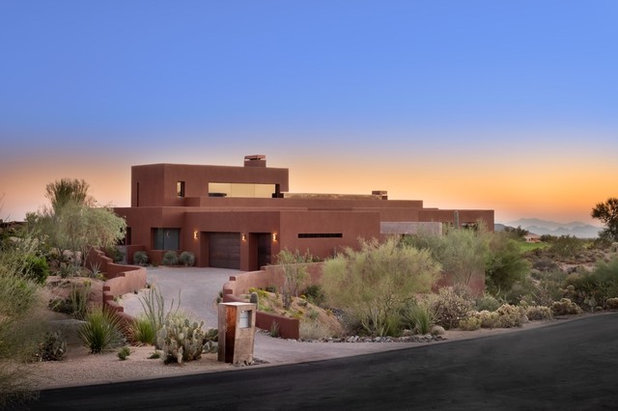
Tate Studio Architects
Paths. “Less is more” is a good theme to keep in mind. Letting the natural terrain and plant life take the spotlight can have a dramatic effect. As seen in the Arizona residence above, the natural landscape has been saved for most of the yard of this large parcel of land. The driveway to the house has a minimized width at the street and shares the route with the walk to the entrance of the house.

Hanselman Landscape and Gardens
Walks. This Philadelphia landscape uses ironstone obtained from nearby Hershey, Pennsylvania, for this beautiful garden path. Local natural materials such as this stone can be a better choice compared with engineered materials, which come with all of the downsides of manufacturing. They are also a better choice than natural materials that come from a distant location, as those require more energy and time to be shipped. Check into local sources whenever possible; you may make some unexpected finds.
In the approach to the New York beach house below, some of the natural dune has been left intact, and it includes a wooden boardwalk, a design that has been used for decades in the area. The charming simplicity of this solution reinforces a sustainable trend that could be applied to locations other than sand dunes. When using wood in outdoor applications, you will want to consider its durability as well as its renewability. Stick with wood species that are easily replenished and commonly used in your area.
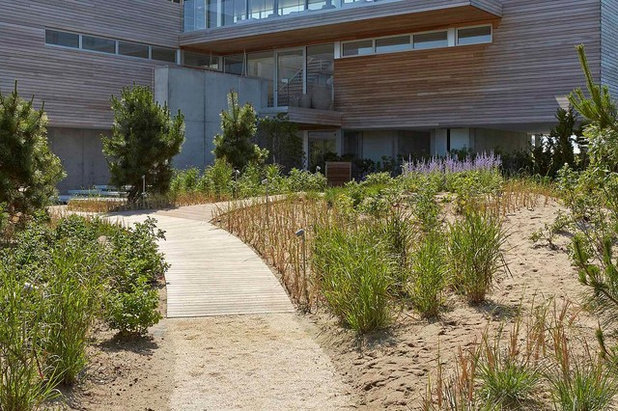
Hollander Design
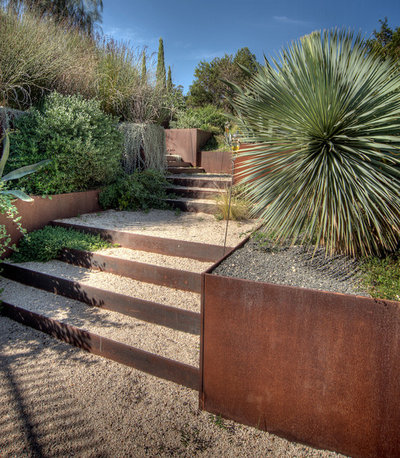
D-CRAIN Design and Construction
Planting borders and steps. You might want to consider simple materials used in a minimalist fashion, as has been done for this home near Austin, Texas. Cor-Ten steel plates can create planter beds as well as steps. The gravel paving in this example allows the landscape to absorb rainfall rather than shedding it off into stormwater drains. Note the succulents growing on the steps, which is a charming result of this design.
Patios. When you want a patio, consider using stone paving, as has been done in the Northern California yard below. Space between the stones can be left for gravel when laid over a bed of sand, which allows for rainwater to be absorbed into the soil. Solutions like this are often far more attractive than a large pouring of concrete.
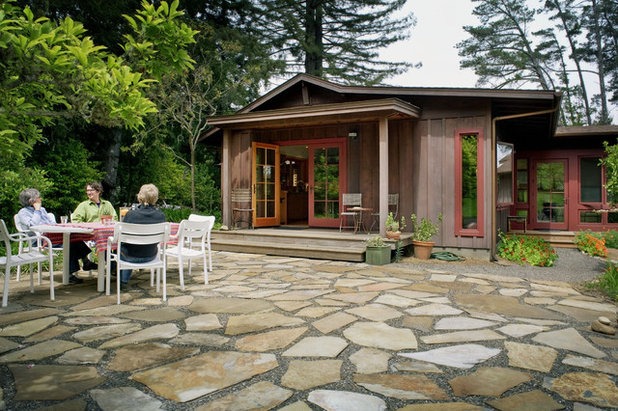
450 Architects, Inc.
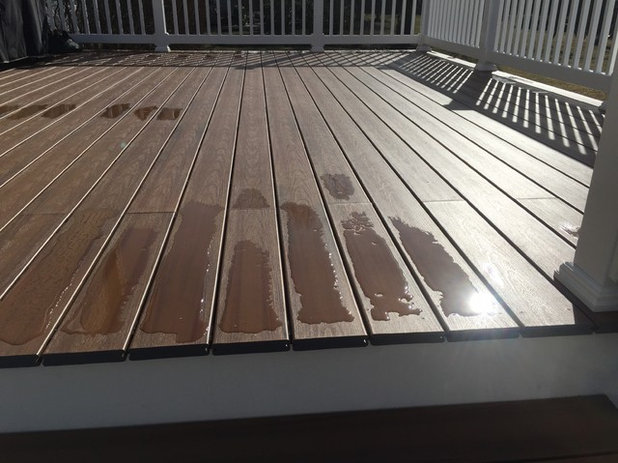
Cali Bamboo
Decks. All-wood decks once were common, but wood has become more expensive. It can be wise to employ other materials for deck surfaces and reduce consumption of natural resources that can be more difficult to replenish. Various composite materials have been invented in recent years — research which brands suit your circumstances best and are the most environmentally conscious. This deck is laid with a product called Cali Bamboo. The company has a line of composite decking planks and other materials that replace traditional wood deck surfaces. The use of bamboo in the composite material makes it a good choice, since bamboo is a fast-growing, plentiful resource.

Bianchi Design
Driveways. The juxtaposition of the gravel driveway with the sculptural elements of this Arizona house enhances the design scheme. Driveways like this are a better solution than black asphalt paving, which is simple and cheap but environmentally unfriendly. Gravel for driveways is an option in wetter climates as well, but its composition will be different. Arid climates are good for decomposed granite, but wetter zones require larger gravel with a deeper gravel bed over sand than the former.

Fivedot
Rainwater collection. Rainwater retention cisterns, as seen in the house above, will probably become more and more common. The solution is elemental to some of the water issues that modern development faces. Imagine you have 100 acres of suburban development. The houses, paving, gutters and streets of that area will shed rainwater that was once absorbed into the water table of that land. The watershed of many developments placed together causes tremendous storm runoff that can cause flooding downstream.
When you can capture the rainwater on your site, you can slowly release it back into your parcel of land by using it to water your landscape. At the same time, you’ll avoid using water from the municipal system. This lessens the burden on water supplies, replenishes water tables and helps to stop sudden stormwater runoff that can cause flooding.
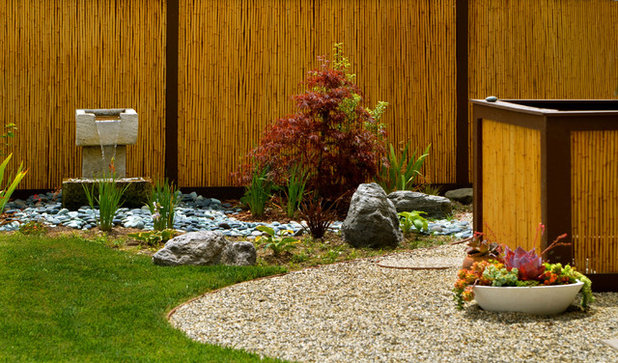
Jesse Im/bugonmyleaf
Fences. Redwood, cedar and pine, among other woods, have traditionally been used for fencing. Foresting has environmental consequences, however, and as it is becoming more limited, these wood species are becoming more expensive. Alternatives are block walls and metal panels, which also can be expensive. Bamboo, once again, provides a relatively inexpensive solution and is a quickly replenished material. As seen in the Los Angeles yard above, bamboo fencing can create a striking and unique effect for your landscape. Cali Bamboo sells bamboo fencing in several colors and sizes. Consider these or other bamboo fencing options and see if they could be a healthy choice for you.
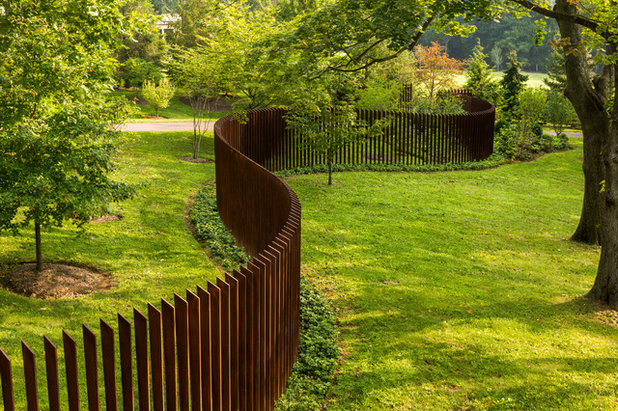
Archer & Buchanan Architecture, Ltd.
As mentioned, steel fencing is more expensive. However, design simplicity may solve part of the cost issue. The fence in the Philadelphia residence above is definitely high-end, but perhaps you have a much shorter distance to cover, and a choice like this might be a good fit.
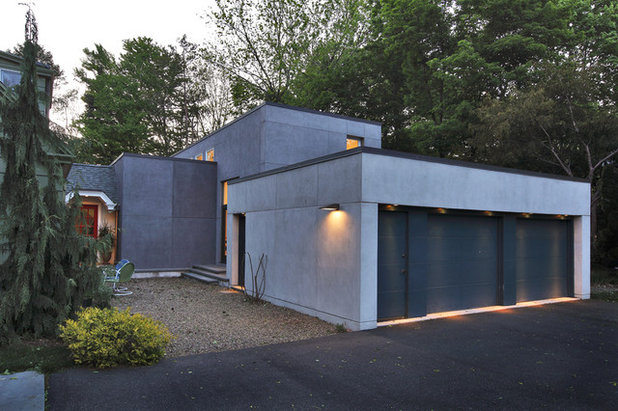
Joseph Bergin Architect PC
Lighting. Light pollution occurs whenever artificial light illuminates the night sky unnecessarily. Security issues often contribute to this situation, but motion sensors are one solution. Even when you use motion sensors, it is best to downlight areas and surfaces.
Consider that when someone shines a flashlight directly at you, you will feel a slight pain in your eyes. This is a bad sign. If this happens to you often, it can degenerate your eyesight over your lifetime. You may scare away a crook here and there with a floodlight that illuminates your driveway; however, every time you pull into your driveway at night, that light will have a negative impact on your eyesight.
Light that washes a wall is far more effective than light that is directed outward or toward a person. You will see a shadowy figure more clearly when the person is softly backlit than when the glare of a direct source obscures your sight, as our eyes have a much harder time readjusting in the glare of direct lighting.
Subtle lighting effects with path and downlight fixtures are used in the houses above and below.
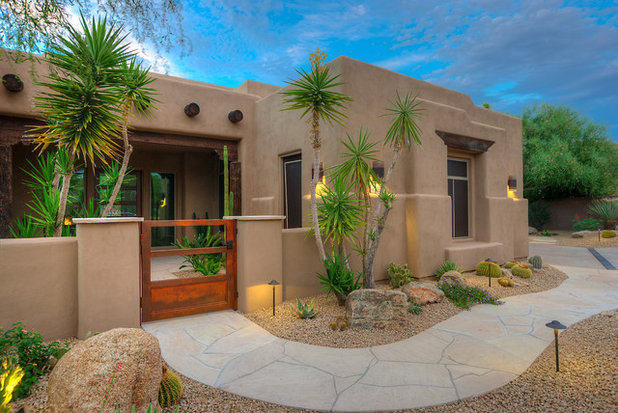
Pascale Land Design
Using smart devices. One last trick you might want to implement is using a smart device. Many household systems, especially irrigation, now have ways to manage consumption. Devices are even available that will shut off the sprinklers if it is raining or the soil is already wet. This will avoid wasting water when it is not needed in your landscape.

Sounds Good AVS Solutions Inc.
More Building Green: How to Design a Healthier Landscape | How to Plan Your Site for Healthier Living | How Your Home Ties Into Its Community





